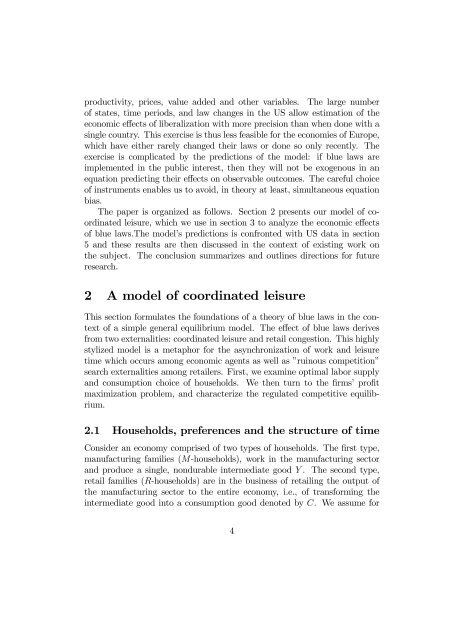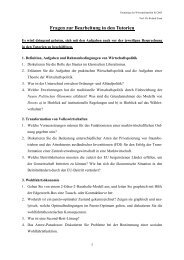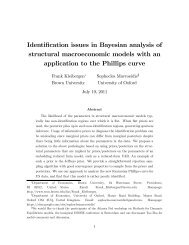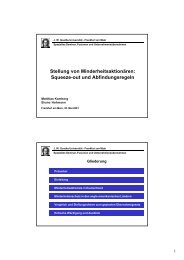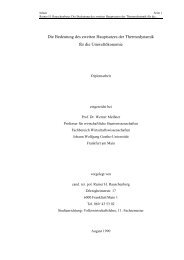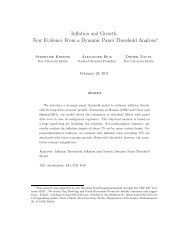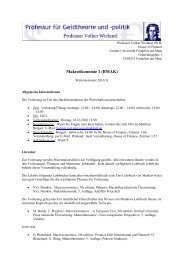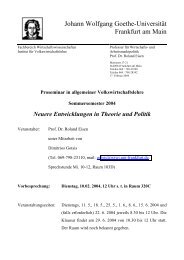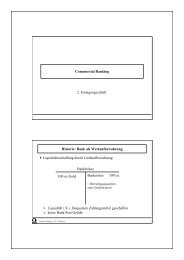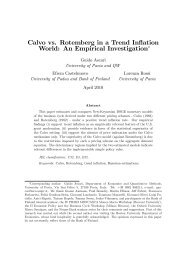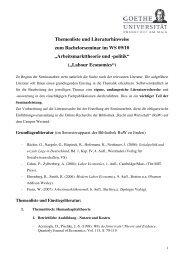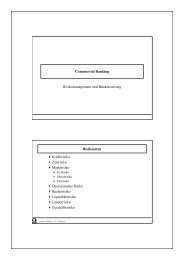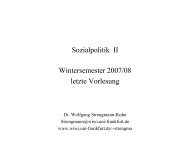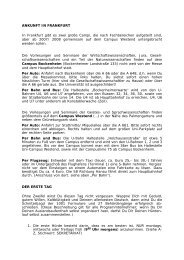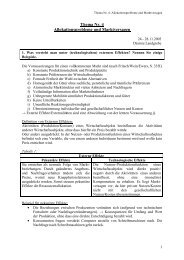Michael Burda - Sciences Po Spire
Michael Burda - Sciences Po Spire
Michael Burda - Sciences Po Spire
You also want an ePaper? Increase the reach of your titles
YUMPU automatically turns print PDFs into web optimized ePapers that Google loves.
productivity, prices, value added and other variables. The large number<br />
of states, time periods, and law changes in the US allow estimation of the<br />
economic effects of liberalization with more precision than when done with a<br />
single country. This exercise is thus less feasible for the economies of Europe,<br />
whichhaveeitherrarelychangedtheirlawsordonesoonlyrecently. The<br />
exercise is complicated by the predictions of the model: if blue laws are<br />
implemented in the public interest, then they will not be exogenous in an<br />
equation predicting their effects on observable outcomes. The careful choice<br />
of instruments enables us to avoid, in theory at least, simultaneous equation<br />
bias.<br />
The paper is organized as follows. Section 2 presents our model of coordinated<br />
leisure, which we use in section 3 to analyze the economic effects<br />
of blue laws.The model’s predictions is confronted with US data in section<br />
5 and these results are then discussed in the context of existing work on<br />
the subject. The conclusion summarizes and outlines directions for future<br />
research.<br />
2 A model of coordinated leisure<br />
This section formulates the foundations of a theory of blue laws in the context<br />
of a simple general equilibrium model. The effect of blue laws derives<br />
from two externalities: coordinated leisure and retail congestion. This highly<br />
stylized model is a metaphor for the asynchronization of work and leisure<br />
time which occurs among economic agents as well as ”ruinous competition”<br />
search externalities among retailers. First, we examine optimal labor supply<br />
and consumption choice of households. We then turn to the firms’ profit<br />
maximization problem, and characterize the regulated competitive equilibrium.<br />
2.1 Households, preferences and the structure of time<br />
Consider an economy comprised of two types of households. The first type,<br />
manufacturing families (M-households), work in the manufacturing sector<br />
and produce a single, nondurable intermediate good Y . The second type,<br />
retail families (R-households) are in the business of retailing the output of<br />
the manufacturing sector to the entire economy, i.e., of transforming the<br />
intermediate good into a consumption good denoted by C. We assume for<br />
4


